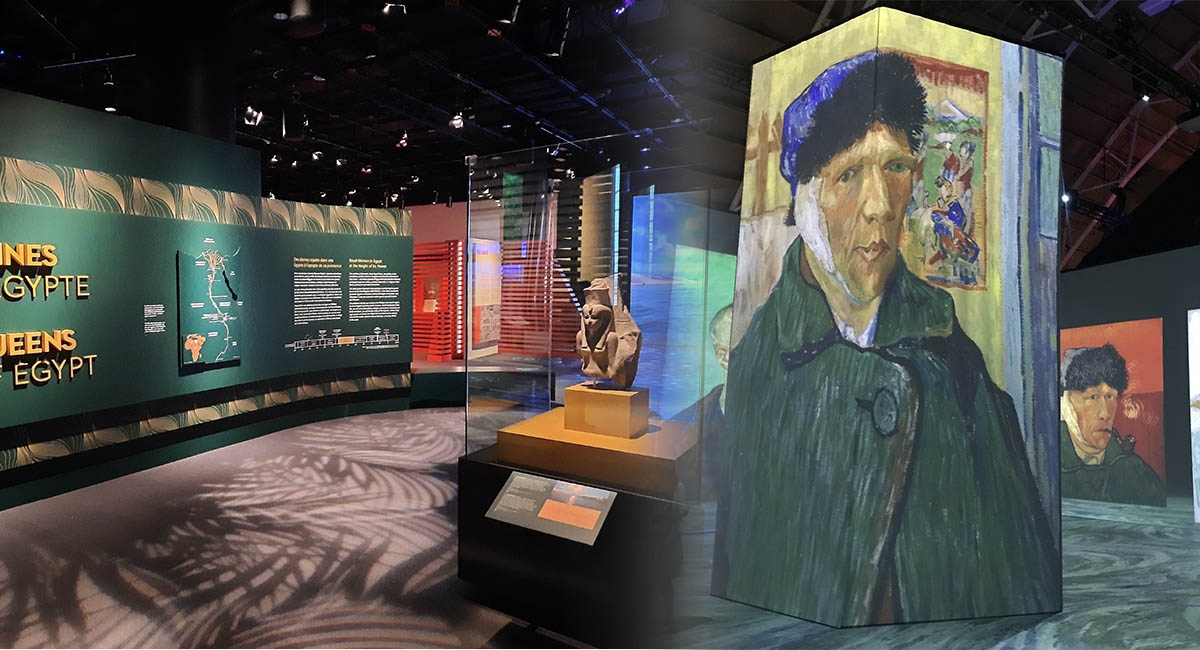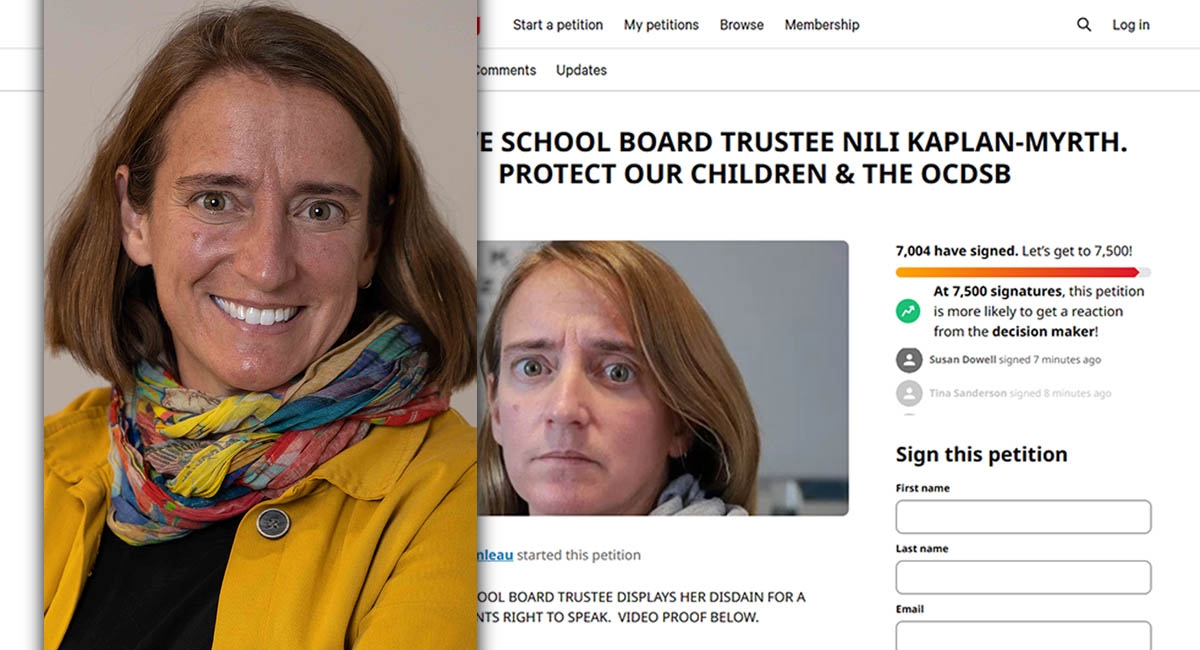
Accessibility and learning don’t always see eye to eye
ABOVE: Scenes from the Queens of Egypt, at the Museum of History, (RIGHT) Beyond Van Gogh, at the Aberdeen Pavilion at Lansdowne Park. (PHOTOS: OLM STAFF)
Last week, I had the chance to check out two popular exhibits. I went to see the Queens of Egypt, at the Museum of History, and Beyond Van Gogh, at the Aberdeen Pavilion at Lansdowne Park.
Both exhibits are fantastic, and I recommend checking them out before they leave.
As I rolled through both exhibits, I noticed two significant differences, but some may not even notice.
Accessibility.
Accessibility may not be the correct term. I had plenty of space to move around. Having limited capacity in places has been one of the few positives of the pandemic. People in wheelchairs now have more room to move around.
With that said, though, I had a tough time seeing the signs below the various display cases. The signs were simply too low for me to read them. I want to make it clear that I’m not complaining or criticizing the Museum of History. I fully realize that my wheelchair is pretty high up compared to some others. I was also fortunate that my PSW was there, and they read the signs back to me.
After the Queens of Egypt exhibit, I checked out the rest of the museum, including the new Canadian History Hall. I’ve been to the Museum of History many times, but not since they added the Canadian History Hall. I was very impressed by it. I was also pleased that people with disabilities are included as well.
It’s especially good because I often feel like Canada forgets that people with disabilities don’t exist or aren’t worth mentioning.
As far as signs in temporary exhibits go. Ideally, signs that are higher up would be good. I know there’s limited space, and one person can be very different in terms of height. The same goes for people in wheelchairs as well. Some wheelchairs are high, and some are low to the ground. Mine just happens to be high.
I still had a fantastic time at the Museum of History. The exhibition is now sold out but I look forward to my next visit.
Now let’s talk about Beyond Van Gogh.
Before I get into it, let me just say that I’ve been a fan of Vincent Van Gogh for a very long time. However, I must admit that I learned even more about him through this exhibit.
I find that I can relate to some of his emotions and even some of his thoughts.
But enough about that.
As I mentioned above, the exhibit is located inside the Aberdeen Pavilion. When I first heard where it was happening, my first thought was why are they having a Van Gogh exhibit in a place where I’d see cows doing cow things?
If you know, you know.
Nothing more needs to be said.
I do miss the Super Ex, though.
When I arrived at the place, it all made sense. The windows are all blacked out, and there are black curtains everywhere. I was very impressed with how the crew(s) transformed the place into a serene, dark environment, with stunning multimedia visuals to guide you into Van Gogh’s life.
In terms of wheelchair accessibility, it was smooth rolling for me. The bathrooms are located inside the Aberdeen Pavilion at the end of the exhibit. If you need to use the bathroom before or after the exhibit, there are bathrooms located inside the Horticulture Building.
All of the signs inside the exhibit are on big screens with big fonts. I must warn you that some of the monitors are pretty bright. If you’re sensitive to bright lights, please keep that in mind.
Also, if you’re planning to use Para Transpo, you may want to say that the address is 100 Exhibition Way instead of 1000. One of my drivers mentioned that all of the buildings at Lansdowne are numbered in 100s.
It seems weird to me that it comes up as 1000 Exhibition Way online.
Speaking of Para Transpo, if you’re just going to see Van Gogh, give yourself 60-90 minutes to see the whole show.
For full details, visit vangoghottawa.com.










